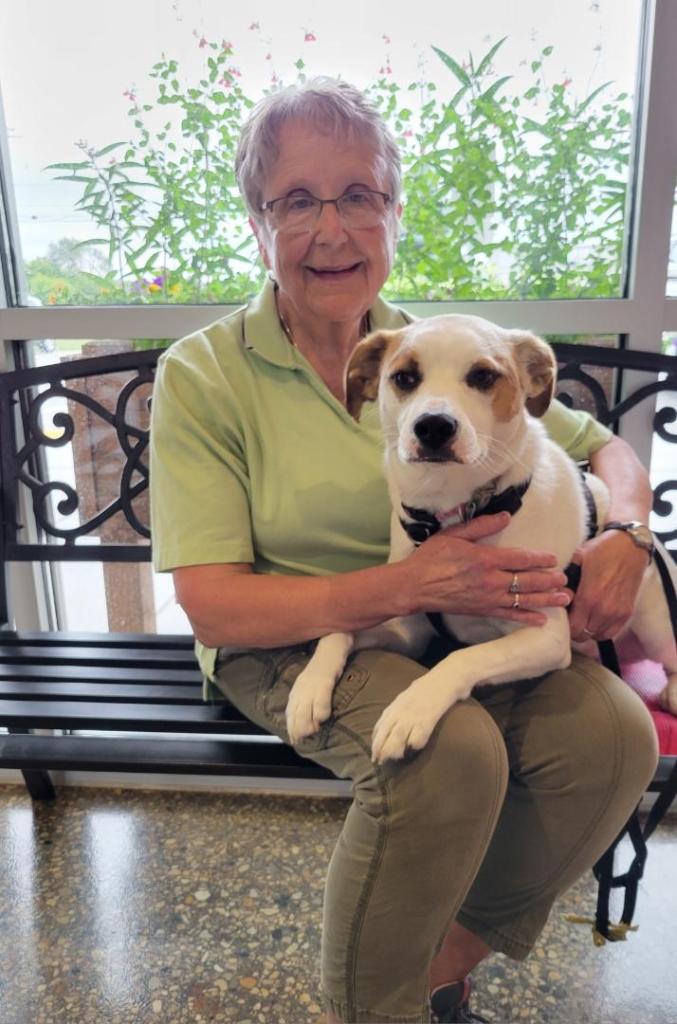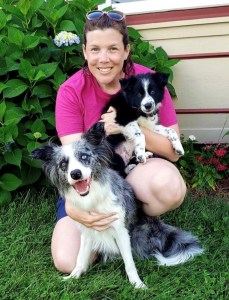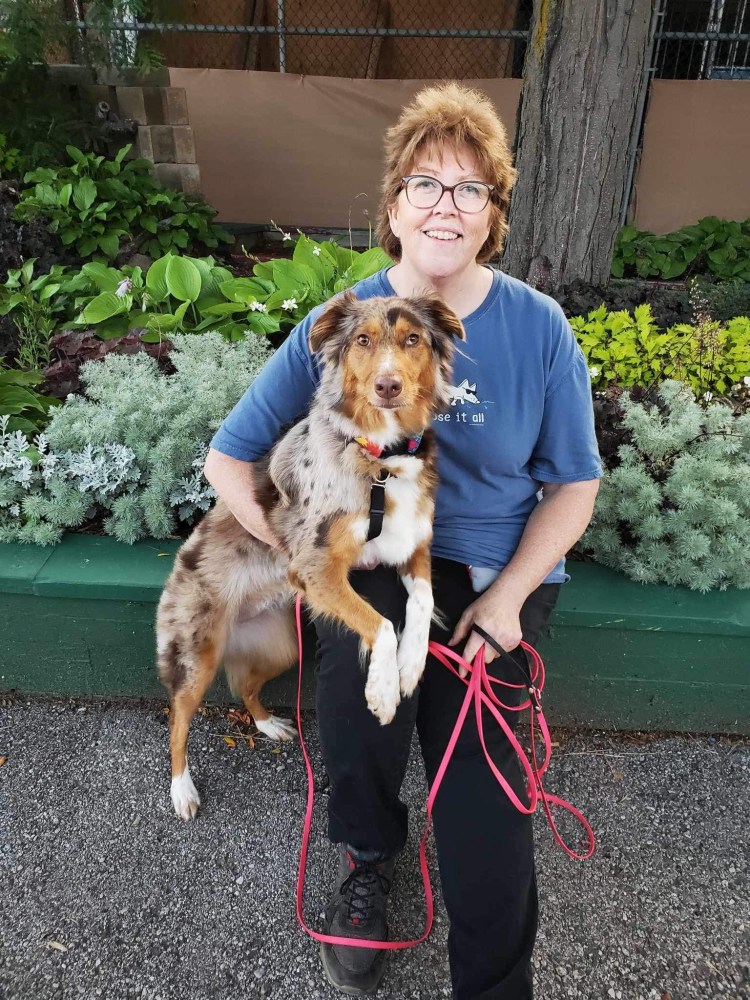Dog Training
Puppy 101 – $80-125 Trainer: Kelli
Puppies 8 weeks to 5 months. This class will get puppies off on the right paw. They will learn to focus on their owners, the benefits of mat behaviors, loose leash walking, impulse control, sit, down, stay, and so much more. (Six dogs maximum per class)
Tuesdays from 7:15-8:15pm
September 26 – October 24 (5 weeks)
Saturdays from 9 – 10am
September 16 – October 21st (5 weeks) (no class Oct 14)
Life Skills I – $80-125
Puppies 6 months and older and dogs. This class will teach older puppies and dogs the basics that are needed to create a well-rounded dog that you will be proud of. From sitting down to focus on you, we will show you how to make your training a positive experience for both you and your dog. (Six dogs maximum per class)
Wednesdays from 7:15 – 8:15 pm Trainer: Kelli
September 13 – October 11 (5 weeks) THIS CLASS IS FULL
Thursdays from 6 – 6:50pm Trainer: Chris/Lori Jo
September 14 – October 26 (6 weeks) (no class Oct 12)
Saturdays from 10:15 – 11:15 am Trainer: Kelli
September 16 – October 21 (5 weeks) (no class Oct 14)
Life Skills II – $125
For dogs 6 months and older that have some knowledge of basic obedience. We will go more in-depth with developing your dog’s impulse, focus, jumping on you or visitors, recall, and work on anything else you would like to cover.
No classes available at this time!
Confidence/Enrichment Class – $100 Trainer: Kelli
This class will help build their confidence while developing a relationship between you and your dog. This class will be fun, exciting and a great form of enrichment. From small obstacle courses to learning tricks and puzzles. (Six dogs maximum per class)
Tuesdays from 6-6:45 pm
September 26 – October 24 (5 weeks)
Rally Class – $100 Trainer: Kelli
Come learn the fun AKC game of “Rally”. This is a very interactive class! Each class will cover skills to complete a rally course. At the end of class you will be executing the course using prior skills learned. (Six dogs maximum per class)
Wednesdays from 6-6:45 pm
September 13 – October 11 (5 weeks)
Youth Classes – $60 Trainer: Chris
For dogs of all ages and children 12-14 years of age. Children must be accompanied by adult.
This class has activities geared to build relationships through fun games!
No available classes at this time!
Beyond Basics – $125 Trainer: Chris
For puppies or dogs who have completed Life Skills I, Life Skills II and/or Basics class and are able to demonstrate: walking politely on leash, a reliable recall, handler has reasonable control of dog, and can hold a “stay” for 15-30 seconds. Working on focus and distractions through engaging activities, transitioning to minimal leash handling, and continue building a more positive, respectful working relationship as a team. (Six dogs maximum per class)
Mondays from 6:30 – 7:30pm
September 11 – October 16 (6 weeks)
Intro to K9 Nosework™ (LVL1) – $125 Trainer: Michelle
For puppies and dogs 6 months and older. Dogs will learn to navigate and process all kinds of environments through scent motivated activities. Using scent odors in different surroundings builds an excellent relationship between owner and dog. This course also builds confidence, reduces stress, focuses the mind, and burns so much energy! Crates will be utilized when dogs are not active in class. (Flat buckle or martingale collars only, regular 6 foot leash strongly preferred). (Six dogs maximum per class)
Saturdays from 10:00-11:00 am
Sept 23 – Nov 4 (no class 10/14)(6 weeks)
Intro to Odor (LVL2)- $125 Trainer: Michelle
For puppies and dogs 6 months and older. Foundation will be built on Intro to K9 Nosework™. Your dog will be introduced to target odors while searching in different environments. Crates will be utilized when dogs are not active in class. (Flat buckle or martingale collars only, regular 6 foot leash strongly preferred). (Six dogs maximum per class)
Saturdays from 11:30-12:30 pm
Sept 23 – Nov 4 (no class 10/14)(6 weeks)
Don’t see a class, date or time that fits your schedule? Private lessons are tailored to you and your dog. You will meet with our trainer and develop a training plan specifically for you.
$70 for 1 hour
$40 for 30 minutes
Trainer: Kelli
$80 for 1 hour
Trainer: Kathie Jaster (Shelter Dog Behavior Specialist) at K9 Calm
***Please bring small sized high-value treats to every class.
Meet our Trainers
To Register: Contact the shelter at 262-677-4388 and ask to speak with Faith
**Note: All classes require current vaccinations, if the animal is of age, including Rabies, Distemper, & Bordetella**
Our Dog Training Philosophy
It is the goal of the Washington County Humane Society to provide training programs
resulting in happy, confident dogs as well as guardians who know how to work with their dog. We
believe in building relationships with our dogs through skill building, compassion and education.
We further believe it is important to provide training classes in a positive environment to enable
dogs to feel safe. Dogs experiencing behavior concerns may be referred to a behavior specialist.
Guidelines:
The techniques used in the WCHS training program will follow the Least Invasive, Minimally Aversive
(LIMA) principle.
• Are dedicated to the use of science based training methods, utilizing the least aversive
techniques possible.
• Are committed to using positive reinforcement as a teaching tool and negative punishment
as complementary management
• Adhere to the Humane Hierarchy https://m.iaabc.org/about/lima/hierarchy/, as outlined
by Dr. Susan Friedman.
• Adhere to The Five Freedoms of The Farm Animal Welfare Council. https://
www.canr.msu.edu/news/an_animal_welfare_history_lesson_on_the_five_freedoms
• Do not use or condone ideologies, methods or gear that impart physical or psychological
punishment or pain on animals.
• Pursue and impart knowledge, maintain competence in animal behavior through
continuing education, active training and applied experience.
Aversive training methods are based on making a dog feel something unpleasant or painful because
they have done something “wrong.” Aversives can be anything that a dog finds displeasing. Aversives
inhibit learning and inhibits the formation of trust between the dog and owner. What is aversive to a
dog is highly individualized, and can have a lasting effect beyond the change of behavior. These side
effects can manifest as avoidance, fear, or aggression, and can teach a dog to be fearful or anxious
about people or situations.
Positive Reinforcers (Rewards) and Motivators:
The use of positive reinforcers and motivators are not only acceptable but strongly encouraged in
WCHS training classes.
Positive motivators encourage a dog to perform a desired behavior. Also, positive reinforcers
strengthen the behavior by offering a meaningful reward that a dog will modify his behavior to obtain.
The motivator must be appealing enough to make a dog work for it. These motivators help build a
relationship of trust, affection and positive association. Even if used incorrectly, positive reinforcers
and motivators create very little risk of a lasting negative impact on the dog, the relationship or the
learning process.
Examples of Positive Reinforcers and Motivators:
• Voice – verbal praise
• Physical Affection
• Food/treats
• Markers such as whistles, clickers or verbal (i.e. “Yes!”)
• Life Rewards (i.e. Sit at the door = opportunity to go outside)
• Play (i.e. Sit = ball will be thrown)
Training Equipment:
The best training tools enhance the ability to communicate with a dog while building a bond of trust
and affection.
WCHS does not support the use of choke collars, shock collars or prong collars.
Body Harnesses are encouraged to reduce stress on a dog’s neck and spine.
Continuing Education:
WCHS believes that it is important to keep up with current dog training trends and new techniques
used in the training field.
Class Sizes:
• Classes will be limited to no more than 6 dogs per instructor. If an assistant is available, a
maximum of 10 dogs will be allowed.
We recognize that the pet’s owner is responsible for their pet and the owner has the right to make
decisions about the professional treatment of their pet.





